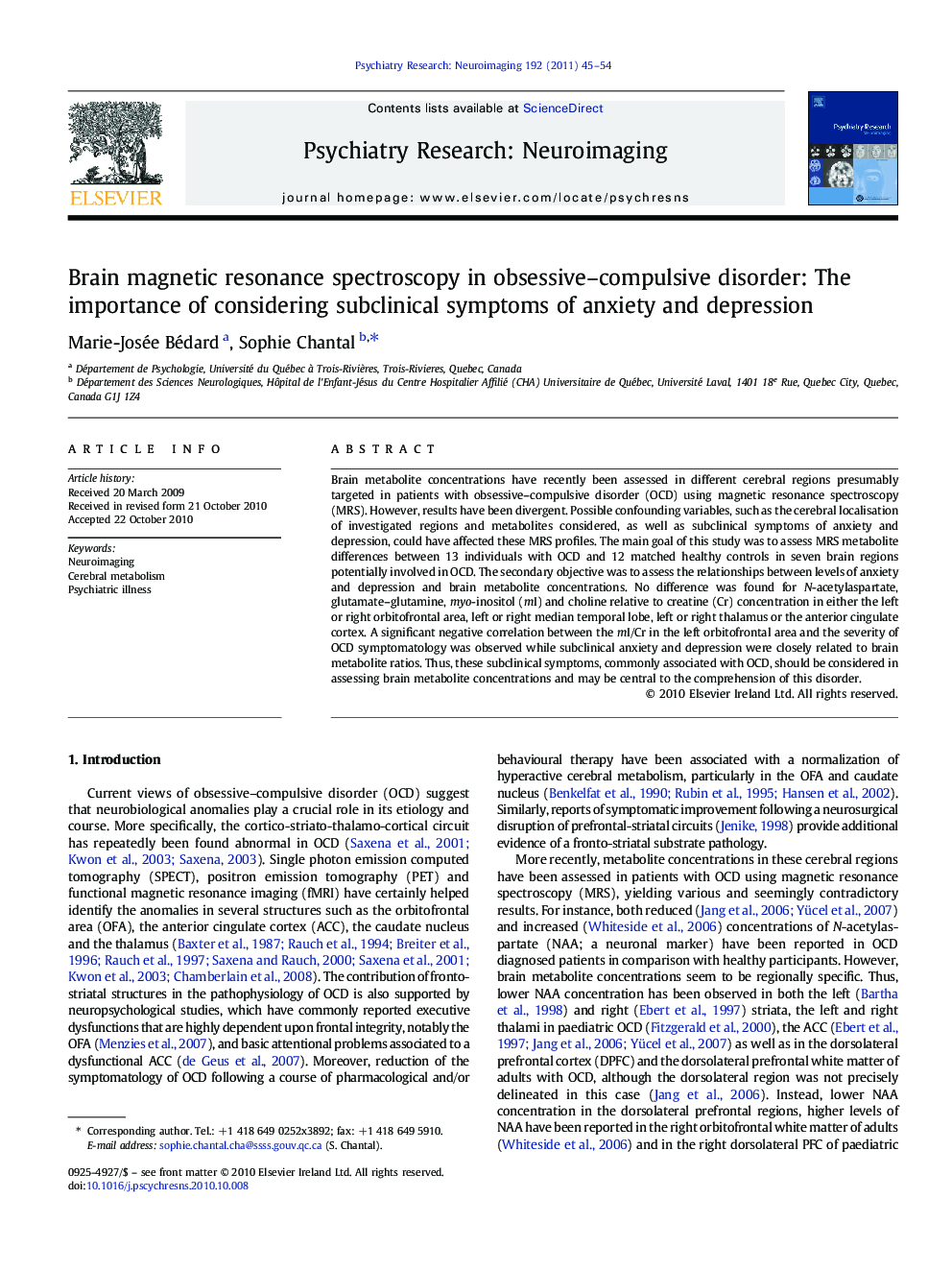| Article ID | Journal | Published Year | Pages | File Type |
|---|---|---|---|---|
| 334549 | Psychiatry Research: Neuroimaging | 2011 | 10 Pages |
Brain metabolite concentrations have recently been assessed in different cerebral regions presumably targeted in patients with obsessive–compulsive disorder (OCD) using magnetic resonance spectroscopy (MRS). However, results have been divergent. Possible confounding variables, such as the cerebral localisation of investigated regions and metabolites considered, as well as subclinical symptoms of anxiety and depression, could have affected these MRS profiles. The main goal of this study was to assess MRS metabolite differences between 13 individuals with OCD and 12 matched healthy controls in seven brain regions potentially involved in OCD. The secondary objective was to assess the relationships between levels of anxiety and depression and brain metabolite concentrations. No difference was found for N-acetylaspartate, glutamate–glutamine, myo-inositol (mI) and choline relative to creatine (Cr) concentration in either the left or right orbitofrontal area, left or right median temporal lobe, left or right thalamus or the anterior cingulate cortex. A significant negative correlation between the mI/Cr in the left orbitofrontal area and the severity of OCD symptomatology was observed while subclinical anxiety and depression were closely related to brain metabolite ratios. Thus, these subclinical symptoms, commonly associated with OCD, should be considered in assessing brain metabolite concentrations and may be central to the comprehension of this disorder.
